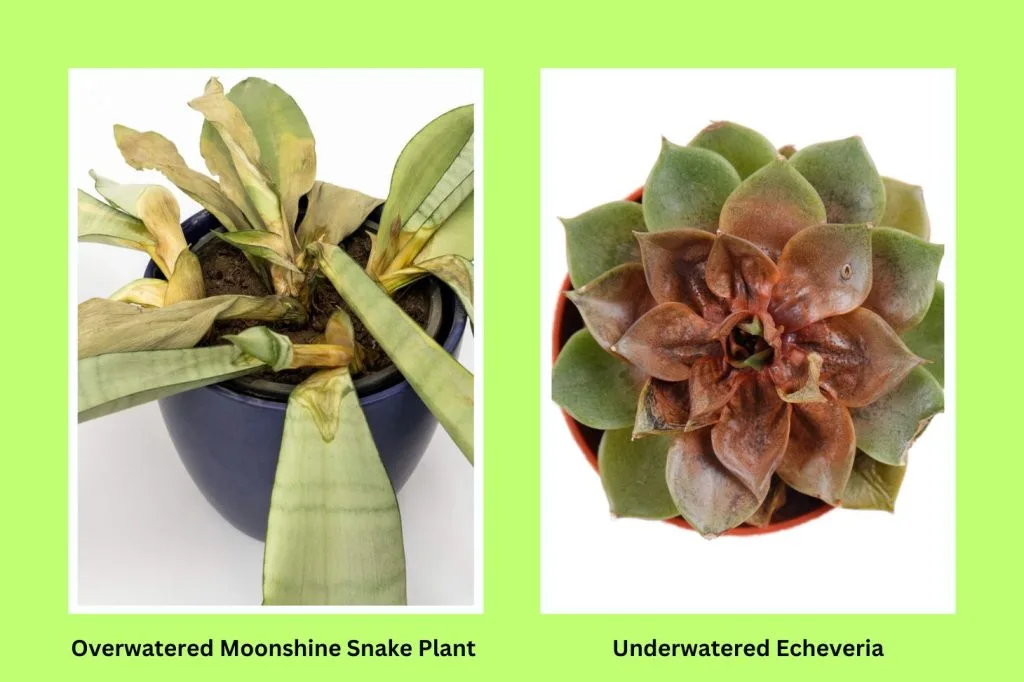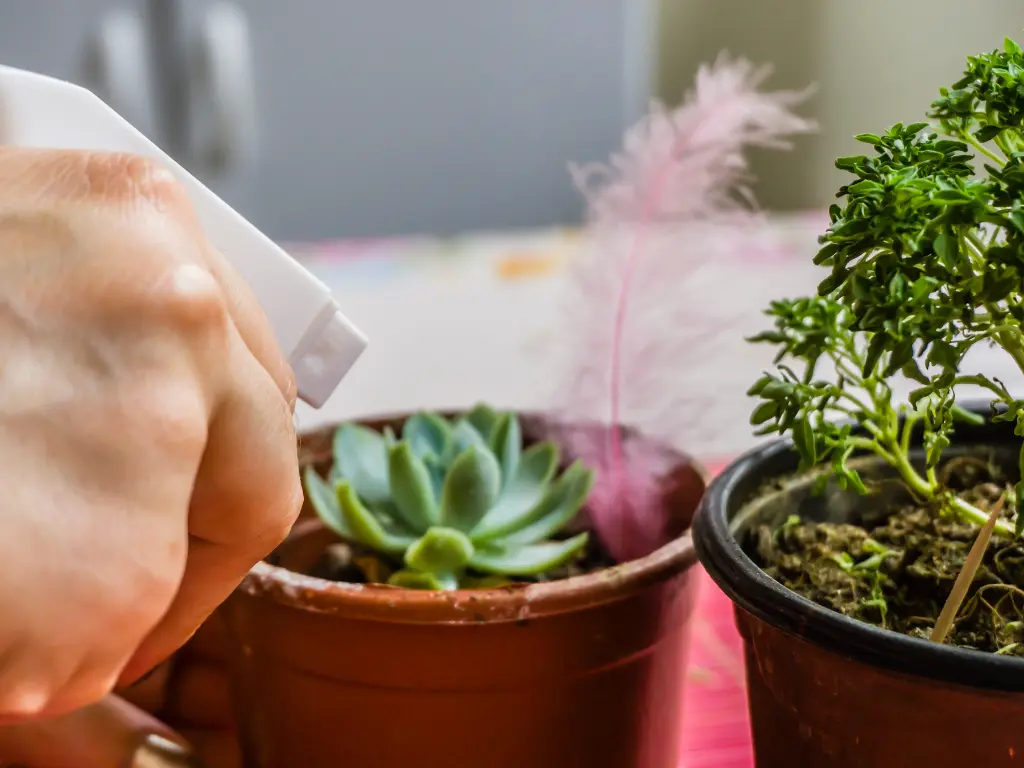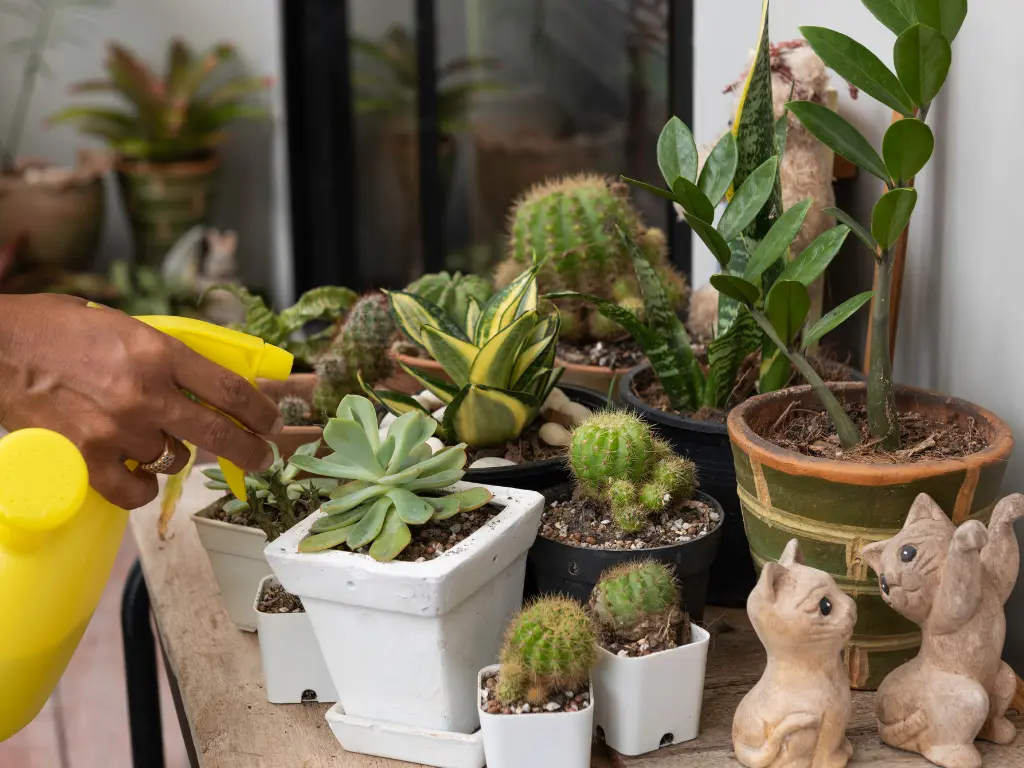Care Guides
How to Water Succulents – What You Need to Know!
Have you ever stared at your succulents and thought, “Am I watering too much—or not enough?” If you’ve asked yourself that question, you’re not alone. When I started my succulent collection, I lost more plants to overwatering than I care to admit.
The truth is, watering succulents isn’t as simple as “once a week” or “when the soil feels dry.” These desert survivors have their own rules, and once you learn them, caring for succulents becomes almost effortless.
Succulents store water in their leaves, stems, and roots. That’s why they look so plump and juicy. In nature, they’re adapted to survive long stretches of drought followed by sudden, heavy rain.
That means they don’t want “sips” of water every day like a typical houseplant. Instead, they thrive on a soak and dry method: deep watering followed by a period of complete dryness.
Think of succulents as little water balloons—they like to fill up and then rest until they need another drink.
In this guide, I’ll walk you through everything you need to know: from how often to water succulents, to spotting signs of overwatering, to choosing the right soil and pots for long-term success.
The Golden Rule: Soak and Dry
Here’s the rule that changed everything for me:
-
Water deeply until water runs out of the drainage hole.
-
Then, wait until the soil is bone dry before watering again.
This method mimics natural rainfall patterns in deserts and keeps roots strong.
How Often Should You Water Succulents?
This is the question every gardener asks—and the frustrating answer is: it depends. Factors like season, climate, soil type, and pot size all affect how quickly your succulent dries out.
But here’s a reliable guideline:
Indoor Succulents
-
Spring and Summer (active growth): Every 1–2 weeks.
-
Fall and Winter (dormancy): Every 3–4 weeks, sometimes less.
Outdoor Succulents
-
Hot, dry climates: Once a week during peak heat.
-
Cooler regions: Every 2–3 weeks, depending on rain and humidity.
Tip: Always check the soil, not the calendar. Stick your finger an inch deep into the soil. If it feels dry, it’s time to water.
Seasonal Succulent Watering Schedule
Succulents don’t grow at the same rate year-round. Adjust your watering to match their growth cycle:
-
Spring & Summer (growing season): More frequent watering as plants are actively using water.
-
Fall (transition): Begin to slow down watering as growth slows.
-
Winter (dormant season): Very little water needed—some species may not need any for weeks.
If you’ve ever killed a succulent in winter, chances are you watered too much during dormancy.
Signs of Overwatering vs Underwatering

Succulents are great communicators—if you know what to look for.
Overwatered succulents:
-
Leaves turn soft, mushy, or translucent.
-
Black spots on leaves or stems (root rot beginning).
-
Plant looks swollen.
Underwatered succulents:
-
Leaves wrinkle, shrivel, or become crispy.
-
Plant looks deflated, less plump.
-
Growth stalls, but roots remain healthy if caught early.
If you’re unsure, always err on the side of underwatering. A thirsty succulent can bounce back, but an overwatered one often can’t.
Best Soil and Pots for Watering Success
Even the perfect watering schedule won’t save your succulents if the soil and pot are wrong.
Soil Mix
Succulents need fast-draining soil. Use a cactus/succulent mix, or make your own:
-
2 parts coarse sand or pumice
-
1 part perlite
-
1 part potting soil (light, not heavy in peat)
This ensures water drains quickly, preventing root rot.
Pots
-
Always use pots with drainage holes.
-
Terracotta pots are ideal—they “breathe” and dry faster.
-
Avoid glass or sealed containers unless you’re confident with minimal watering.
Watering Succulents Indoors vs Outdoors

Indoors:
-
Less airflow means soil stays wet longer.
-
Stick to a conservative watering schedule.
-
Consider using a moisture meter if you’re unsure.
Outdoors:
-
Sun and wind dry soil quickly.
-
You’ll likely water more often, especially in summer.
-
Watch out for unexpected rainfall—nature might water for you!
Watering Succulents in Different Containers
-
Small pots: Dry faster—check them more often.
-
Large pots: Hold moisture longer—space out watering.
-
Hanging baskets: Airflow dries them quickly—more frequent watering.
-
Terrariums: Risky for beginners. Water sparingly with a spray bottle, and only when completely dry.
Should You Mist Succulents?
This is a common misconception. Misting is great for propagating succulent cuttings, but mature succulents don’t like misting. It keeps leaves damp, encouraging rot and pests.
Instead, always water the soil directly at the base.
Special Cases: Different Succulent Types
Not all succulents have the same thirst. Here are a few examples:
-
Aloe & Agave: Need deeper but less frequent watering.
-
Echeveria: Sensitive to water sitting in their rosettes—always water at the base.
-
Lithops (living stones): Extremely sensitive—follow seasonal cycles carefully.
-
Cacti (technically succulents): Thrive on infrequent, deep watering.
When in doubt, research the species you own.
Common Watering Mistakes to Avoid
-
Watering on a schedule without checking the soil.
-
Using non-draining pots.
-
Letting water pool in rosettes or crowns.
-
Watering during dormancy.
I made every one of these mistakes as a beginner. Once I corrected them, my succulents went from limp and sad to thriving and flowering.
Frequently Asked Questions
How do I know when to water succulents?
Check the soil—it should be completely dry before watering again.
Can succulents survive without water for months?
Some species can, especially during dormancy, but most do better with occasional deep watering.
What’s the best way to water succulents indoors?
Soak and dry method—water deeply at the base until it drains, then let dry out completely.
Should I water succulents from the bottom?
You can, but top watering is fine as long as you avoid leaving water sitting in the rosettes.
Conclusion
Watering succulents doesn’t have to be confusing. The secret is simple: mimic nature. Give them a good soak, then let them rest until they’re truly dry.
Remember these takeaways:
-
Succulents thrive on soak and dry watering.
-
Adjust by season and location.
-
Overwatering is the biggest killer—less is more.
-
Use gritty soil and drainage pots for best results.
Once you understand this rhythm, you’ll stop worrying about “how often” and start enjoying your succulents for the resilient, beautiful plants they are.
Ready to expand your knowledge? Check out my other guides on propagating succulents, best soil mixes for cacti and succulents, and how to care for lithops (living stones).
Your succulents are tougher than you think. All they need is the right watering routine—and now you’ve got it.

